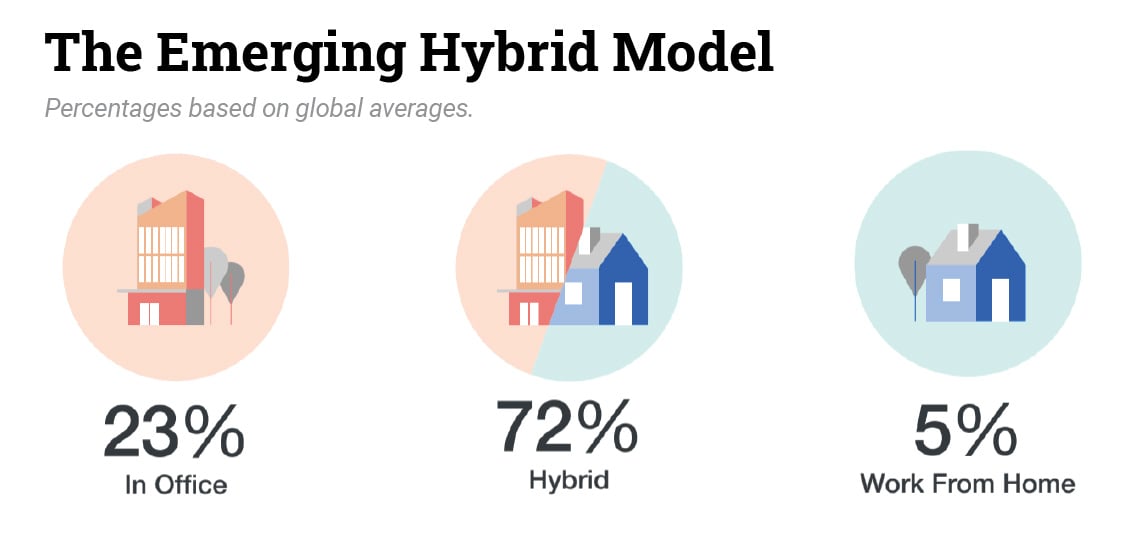Over the past several years, whether intentional or not, companies have become more flexible about where and when employees work.
Many have transitioned to hybrid office environments, where a large number of employees are working remotely sometimes or all of the time.

(from Steelcase Global Report)
Luckily, being in the same building is not a prerequisite for productivity and high performance. Developing and honing these six skills is crucial to meeting and surpassing business objectives, regardless of where or how your team works:
- Communication - Clear and open communication reduces misunderstanding, minimizes work delays, and enhances overall productivity.
- Interactive Feedback - A feedback culture provides essential information for decision making and performance improvement by reflecting on the past and anticipating future results.
- Emotional Intelligence - Identifying and managing your emotions while navigating the emotions of others reduces assumptions and increases psychological safety.
- Structures - Unifying and streamlining work processes builds the foundation for efficient and successful teams.
- Accountability - Holding one another respectfully accountable drives innovation, trust, and productivity.
- Cohesion - Team cohesion increases satisfaction, engagement, and collaboration, resulting in increased success and productivity.
But, the story doesn’t end there. Teams and leaders need a few more things to truly thrive in a hybrid environment. Namely leader effectiveness, team alignment, and measurement.
Effective leaders steer and influence their direct reports toward achieving short- and long-term goals. From seasoned, trained leaders to accidental leaders, how they lead—and how well—can look very different. How do you know if your leaders are effective?
Team alignment affects how your employees work together and company culture. Teams that are not aligned don’t perform well. Teams who are aligned on goals and priorities are more collaborative and have higher morale. How do you know if your teams are aligned?
It all comes down to the right measurement.
73% of talent leaders say people analytics will be a top priority over the next 5 years (Linkedin). It’s time to speed up that timeline. People analytics is not a new concept and the links to business impact are well established.
By collecting the right data, and continuing to measure and analyze over time, you can pinpoint where to make behaviorally-based performance improvements that will have a significant, positive impact on productivity and job satisfaction.
Organizations need to provide the tools and training to set up their teams for success. Leaders need to learn how to foster deeper connections and be equipped with insights to help target their focus. Finally, everyone needs to put in the effort to stay connected, whether in person, remotely or both.
Make it a priority to develop the competencies of your people and processes and your company will excel—not just in a hybrid environment, but in any environment—and the data will prove it.
.png?width=125&height=61&name=Logo%20-%20Vivo%20Team%20-%20White%20(2).png)
